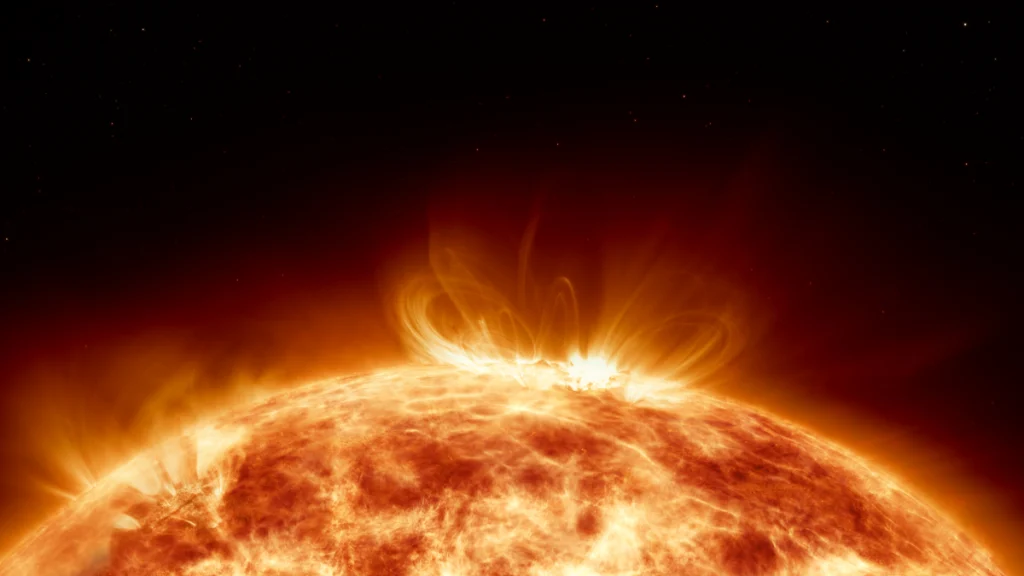The Sun’s Hidden Impact: Solar Storms and Heart Health
The cosmic dance between our Sun and Earth may affect more than just satellites and power grids. A groundbreaking study from Brazil has uncovered a potential link between solar storms and heart attacks, with women appearing particularly vulnerable to these celestial disturbances. This research marks the first of its kind in Brazil’s latitudes and opens new questions about how space weather might influence human health. The team from the National Institute for Space Research (INPE) analyzed over 1,300 heart attack cases against periods of geomagnetic activity, revealing patterns that suggest our bodies may respond to cosmic forces in ways we’re only beginning to understand.
When the Sun releases enormous bursts of energy, these solar storms travel through space and interact with Earth’s protective magnetic field, creating what scientists call “geomagnetic disturbances.” The Brazilian researchers examined hospital records from São José dos Campos between 1998 and 2005—a period of heightened solar activity—and discovered something remarkable. While men suffered nearly twice as many heart attacks overall, women showed a disproportionate increase in heart attacks during geomagnetically disturbed days compared to calm periods. This effect was most pronounced in women aged 31-60, where the relative frequency of heart attacks was up to three times higher during solar storms. “Our results suggest that women are more susceptible to geomagnetic conditions,” explained lead researcher Luiz Felipe Campos de Rezende, highlighting a gender disparity that hadn’t been previously documented in scientific literature.
The mechanics behind this potential connection remain somewhat mysterious, though scientists have proposed several theories. When solar particles collide with Earth’s magnetic field, they may trigger changes in human physiology, potentially affecting blood pressure, heart rate, and even our circadian rhythms. This relationship between space weather and heart health hasn’t gone completely unnoticed—since the late 1970s, studies primarily from the Northern Hemisphere have hinted at possible connections. However, the Brazilian study breaks new ground by examining this phenomenon in a different geographic context and by identifying the potentially heightened vulnerability of women. These findings don’t establish definitive causation but create compelling questions for future research.
The research team emphasizes caution in interpreting their results. “This is the first study on the subject conducted in our latitudes, but it isn’t conclusive. Therefore, the intention isn’t to cause alarm among the population, particularly among women,” Rezende noted. The study has limitations—it’s observational, restricted to a single city, and uses a sample size that, while substantial, isn’t optimal for drawing medical conclusions. Nevertheless, the researchers maintain that their findings represent “an empirical result of hypothetical significance and relevance that shouldn’t be disregarded in the scientific context.” The gender disparity discovered is particularly intriguing, as previous literature hasn’t extensively documented women’s potentially greater sensitivity to geomagnetic disturbances.
This research arrives at a noteworthy moment in our solar neighborhood. The Sun operates on approximately 11-year cycles of high and low activity, with the current cycle reaching its “solar maximum” in late 2024 and early 2025. This peak period means solar storms are more likely over the coming year, though predicting their precise timing remains challenging for scientists worldwide. “When this type of service is more advanced—and if the impact of magnetic disturbances on the heart is confirmed—we’ll be able to consider prevention strategies from a public health perspective, especially for individuals who already suffer from heart problems,” Rezende explained, pointing toward future applications if these connections strengthen through additional research.
The study opens fascinating pathways for future scientific inquiry at the intersection of astronomy, geophysics, and human health. If solar activity genuinely influences cardiovascular events, particularly in women, this could reshape aspects of public health planning and cardiac care. As our understanding of space weather forecasting improves, medical systems might eventually incorporate solar storm predictions into healthcare strategies for vulnerable populations. This research reminds us that the connections between cosmic phenomena and human health may be more intricate than previously recognized. While much remains to be discovered, the Brazilian study suggests that our bodies may indeed respond to the rhythms and disruptions of our nearest star in ways both subtle and significant. As we enter a period of heightened solar activity, these findings invite us to consider the complex relationship between the cosmos and our cardiovascular well-being.















